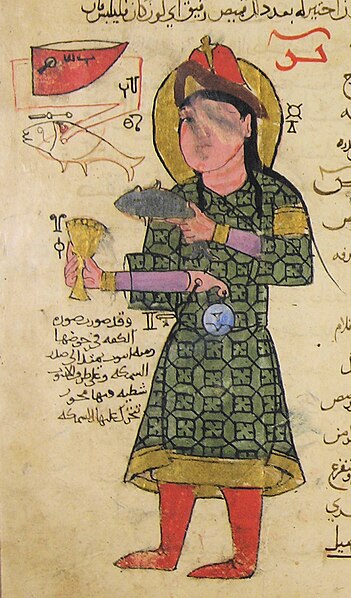A combination lock is a type of locking device in which a sequence of symbols, usually numbers, is used to open the lock. The sequence may be entered using a single rotating dial which interacts with several discs or cams, by using a set of several rotating discs with inscribed symbols which directly interact with the locking mechanism, or through an electronic or mechanical keypad. Types range from inexpensive three-digit luggage locks to high-security safes. Unlike ordinary padlocks, combination locks do not use keys.
A Wordlock letter combination lock.
A simple combination lock.
A single-dial padlock by Master Lock.
The component parts of a Stoplock combination padlock.
Badīʿ az-Zaman Abu l-ʿIzz ibn Ismāʿīl ibn ar-Razāz al-Jazarī was a Muslim polymath: a scholar, inventor, mechanical engineer, artisan and artist from the Artuqid Dynasty of Jazira in Mesopotamia. He is best known for writing The Book of Knowledge of Ingenious Mechanical Devices in 1206, where he described 50 mechanical devices, along with instructions on how to construct them. He is credited with the invention of the elephant clock. He has been described as the "father of robotics" and modern day engineering.
Diagram of a hydropowered perpetual flute from The Book of Knowledge of Ingenious Mechanical Devices by Al-Jazari in 1206.
Court scene. Amid, modern-day Diyarbakır, Turkey, 1206 (Ms. Ahmet III 3472).
Mechanical Turkic servant. Amid, modern-day Diyarbakır, Turkey, 1206 (Ms. Ahmet III 3472).
Female servant. Amid, modern-day Diyarbakır, Turkey, 1206 (Ms. Ahmet III 3472).








